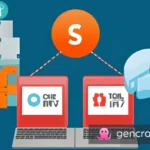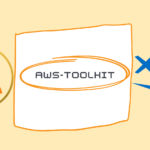E thical Hacking
Syllabus
- » How does internet work.
- » What is network ?
- » Countermeasures of network.
- » What is IP and types of IP ?
- » What is Mac ?
- » What is Cookie and Cache ?
- » Domain Name System
- » DNS Poisoning
- » o Name Server
- » Electronic Mail
- » Architecture and Services
- » Mail Access Protocols
- » Introduction of Ports
- » Introduction to Web Browser
- » Detail Study on Buffer or Packets
In this module of networking concept, cyber crime awareness society, where we include the details about ip address, mac address, dns etc.
2nd Module : Operating System Concept
- » Introduction to Operating System
- » Types of Operating System
- » Bootstrapping Technology
- » Understanding Windows
- » Understanding Tokens
- » Impersonation Tokens
In the module of operating system concept,the students will also learn about the linux, windows operating system, details about the cookies, cache etc.
3rd Module : Introduction to Ethical Hacking
- » What is Ethical Hacking
- » Types of Hackers
- » Who is a Hacker
- » Security Challenges
- » Scanning
- » Skills required for an Ethical Hacker
- » Types of Attacks
- » What do Ethical Hackers Do
- » Vulnerability Research
- » Effects of Hacking
- » How can Hacking be Ethical
- » Types of Data Stolen from the organisation
- » What is Penetration Testing
In this module of ethical hacking introduction,every students will able to learn about the hackers, classes of hacking, types of hackers.
4th Module : Footprinting
- » Footprinting Terminologies
- » What is Footprinting
- » Methods of Footprinting
- » Benefits of Footprinting
- » People Search
- » Who-is-lookup
- » DNS Lookup
- » Analyzing Email Headers
- » Extracting DNs Information
- » Traceroute
- » Mirroring Websites
- » Extracting Website Informations
- » Tracking Users
- » Tracking Emails Communications
- » Tracking Mobile Communications
- » Mobile Communications Countermeasures
In the module of footprinting, which is called information gathering, where the students to collect information about the target.
5th Module : Google Hacking
- » What a hacker Do using Google Hacking
- » Footprinting using Google Hacking Technique
- » Google Advance Search Operators
In this module of google hacking, students will able to learn about the google searching operators.
6th Module : Scanning Network
- » Types of Scanning
- » Three Way Handshake
- » TCP Communication Flags
- » Hping Commands
- » Scanning Techniques
- » Searching Vulnerable Systems
- » Operating System Fingerprinting
- » Complete Study on Banner Grabbing
- » Vulnerability Scanning
- » Proxy Servers
- » Use of Proxies
- » Working of Multi Proxies
- » Proxy Tools
In the module of network scanning, which is also called pre attack phase, students will able to gather information about the targeted network, to perform vulnerability analysis which will be used to penetrate into the network.
7th Module : System Hacking and Passwords Breaking
- » CCAS Hacking Methodology
- » Password Cracking
- » Password Complexity
- » Password Cracking Techniques
- » Types of Password Attacks
- » Microsoft Authentication
- » How Hash Passwords are Stored in Windows SAM?
- » PWdump7 and Fgdump
- » LazeSoft
- Ophcrack
- Cain & Abel
- » Detail Study on Password Cracking Tools
- » Keylogger
- » Types of Keystroke Loggers
- » Detail Study on Keyloggers and Spywares
- » AntiKeyloggers
- » Spyware
- » Types of Spyware
- » USB Spyware
- » Audio Spyware
- » Email or internet Spyware
- » Antispyware
In the module of system hacking, the students how to penetrate into the network using exploits / coding or tools. Password breaking will help the students to learn how to break the password of various files , system etc
8th Module : Steganography & Cryptography
- » Steganography Techniques
- » How Steganography Works
- » Types of Steganography
- » Methods of Steganography
- » Steganography Detection Tools
- » Cryptography
- » Types of Cryptography
- » Cryptography Techniques
- » What is SSH
- » Cryptography Tools
- » Cryptography Attacks
- » Code Breaking Methodologies
In this module learn about how to use cryptographic techniques to encrypt the communication channels
9th Module : Trojans and Backdoors
- » Reasons of Trojans
- » How to use Trojans
- » How Systems get infected by Trojans
- » Types of Trojans
- » Designing Trojans
- » Removing Trojans
- » Detail study on Designing and use Trojans
- » Detections Trojans
- » How to create Backdoors
- » Uninstalling Trojans remotely
- » Purpose of Backdoors
- » Study on Anti-Trojan Sofware
- » Backdoor Countermeasures
- » Trojans Countermeasures
In this module learn how to design / detect and remove the Trojans and wormseed
10th Module : Viruses & Worms
- » Introduction to Viruses
- » Stages of Viruses Life
- » Working Of Viruses
- » Why Do People Create Computer Viruses
- » Indications of Viruses attack
- » How does a Computer get infected by Viruses
- » Viruses Analysis
- » Types of Viruses
- » Desiging Viruses
- » Computer Worms
- » Worm Maker
- » Worm Analysis
- » Anti-Virus Tools
- » Virus detection methods
- » Virus & Worms Countermeasures
In this module learn about the design / detection and removal of virus and worms from the system
11th Module : Sniffers & Phishing
- » Sniffing Threats
- » How a Sniffer Works
- » What is Address Resolution Protocol (ARP)
- » Types of Sniffing
- » How DHCP works
- » Spoofing Attacks
- » DNS Poisoning
- » Sniffing Tool : WireShark
- » Sniffing Prevention Techniques
- » How to Detect Sniffing
- » What is Phishing
- » How Phishing works
- » Types Of Phishing
- » Designing Phishing
- » Detection of Phishing
In this module learn about the design / detection and removal of virus and worms from the system
12th Module : Social Engineering
- » What is Social Engineering
- » Behaviors Vulnerable to attacks
- » Why is Social Engineering Effective
- » Warning Signs of an Attacks
- » Phases in a Social Engineering attack
- » Impact on the Organization
- » Command Injection Attacks
- » Common Targets of Social Engineering
- » Types of Social Engineering
- » Social Engineering Through Impersonation On Social networking Sites
- » Risks of Social Networking to Corporate Networks
- » Social Engineering Countermeasures
In ethical hacking course this module learn how to collect information using social engineering.
13th Module : Denial of Service
- » What is Denial of Service Attack
- » What is Distributed Denial Of Service Attacks
- » Symptoms of DoS attack
- » Internet Relay Chat (IRC)
- » DoS Attack Techniques
- » Botnet
- » DoS/DDoS Countermeasures
- » Detail Study on DoS attack Tools
- » Detection Techniques
In this module learn how to spam the websites and techniques to secure from these attacks
14th Module : Session Hacking
- » What is Session Hijacking
- » Key Session Hijacking Techniques
- » Session Hijacking Process
- » Types of Session Hijacking
- » Session Hijacking Tools
- » Countermeasures
- » Methods to Prevent Session Hijacking
- » Defending Against Session Hijacking Attacks
In this module learn about session hijacking which will help them to hack the accounts using cookies or sessions.
15th Module : Hacking Web Applications
- » Web Application Security Statistics
- » Introduction to Web Applications
- » Web Application Components
- » How Web Applications Work?
- » Web Application Architecture
- » Injection Flaws
- » What is LDAP Injection?
- » How LDAP Injection Works?
- » Cross-Site Scripting (XSS) Attacks
- » How XSS Attacks Work?
- » Cross-Site Scripting Attack Scenario: Attack via Email
- » XSS Example
- » XSS Cheat Sheet
- » Cross-Site Request Forgery (CSRF) Attack
- » How CSRF Attacks Work?
- » Web Application Denial-of-Service (DoS) Attack
- » Buffer Overflow Attacks
- » Cookie/Session Poisoning
- » How Cookie Poisoning Works?
- » Hacking Web Servers
- » Username Enumeration
- » Password Attacks: Password Functionality Exploits
- » Password Attacks: Password Guessing
- » Password Attacks: Brute-forcing
- » Session Attacks: Session ID Prediction/ Brute-forcing
- » Cookie Exploitation: Cookie Poisoning
- » Encoding Schemes
- » How to Defend Against SQL Injection Attacks?
- » How to Defend Against Command Injection Flaws?
- » How to Defend Against XSS Attacks?
- » How to Defend Against DoS Attack?
- » How to Defend Against Web Services Attack?
- » Web Application Countermeasures
In this module learn how to secure and hack the websites.
16th Module : SQL Injection
- » What is SQL Injection?
- » SQL Injection Attacks
- » How Web Applications Work?
- » SQL Injection Detection
- » Types of SQL Injection
- » What is Blind SQL Injection?
- » SQL Injection Methodology
- » Information Gathering
- » Password Grabbing
- » Grabbing SQL Server Hashes
- » Extracting SQL Hashes (In a Single Statement)
- » SQL Injection Tools
- » How to Defend Against SQL Injection Attacks?
- » How to Defend Against SQL Injection Attacks: Use Type-Safe SQL Parameters
In this module learn about hacking and security of the database.
17th Module : Miscellaneous
- » Wifi Hacking – WPA2
- » Creating fake access point
- » Android Phone hacking
- » Deleted Data recovery
- » Detail study on android phone pattern breaking
- » Android Phone Rooting
- » MITM
- » Whatsapp Data Recovery
In this module learn about the wifi hacking, Whatsapp hacking, data recovery and android phone hacking
18th Module : Cyber Crime Investigation
- » Introduction to Cyber Crime Investigation.
- » Types of Cyber Crimes.
- » Report Cyber Crimes.
- » Investigating Emails (Email Tracing)
- » Online email header analysis.
- » Investigating Phishing Cases.
- » Investigating Data Theft Cases.
- » Investigating Orkut Profile Impersonation Cases.
- » Cyber Law & IT Act, 2000 / 2008.
In this module learnabout the cyber crime investigation with some live case studies.
https://www.mayanksinghkushwah.in/











